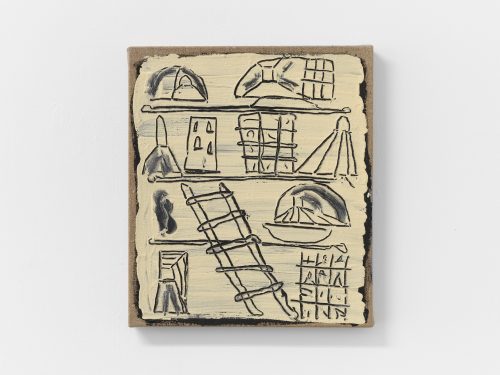
Jan Zöller
Jan Zöller - Visitors

Visitors, Jan Zöller, installation view 2022, Meyer Riegger, Berlin
Advertisement
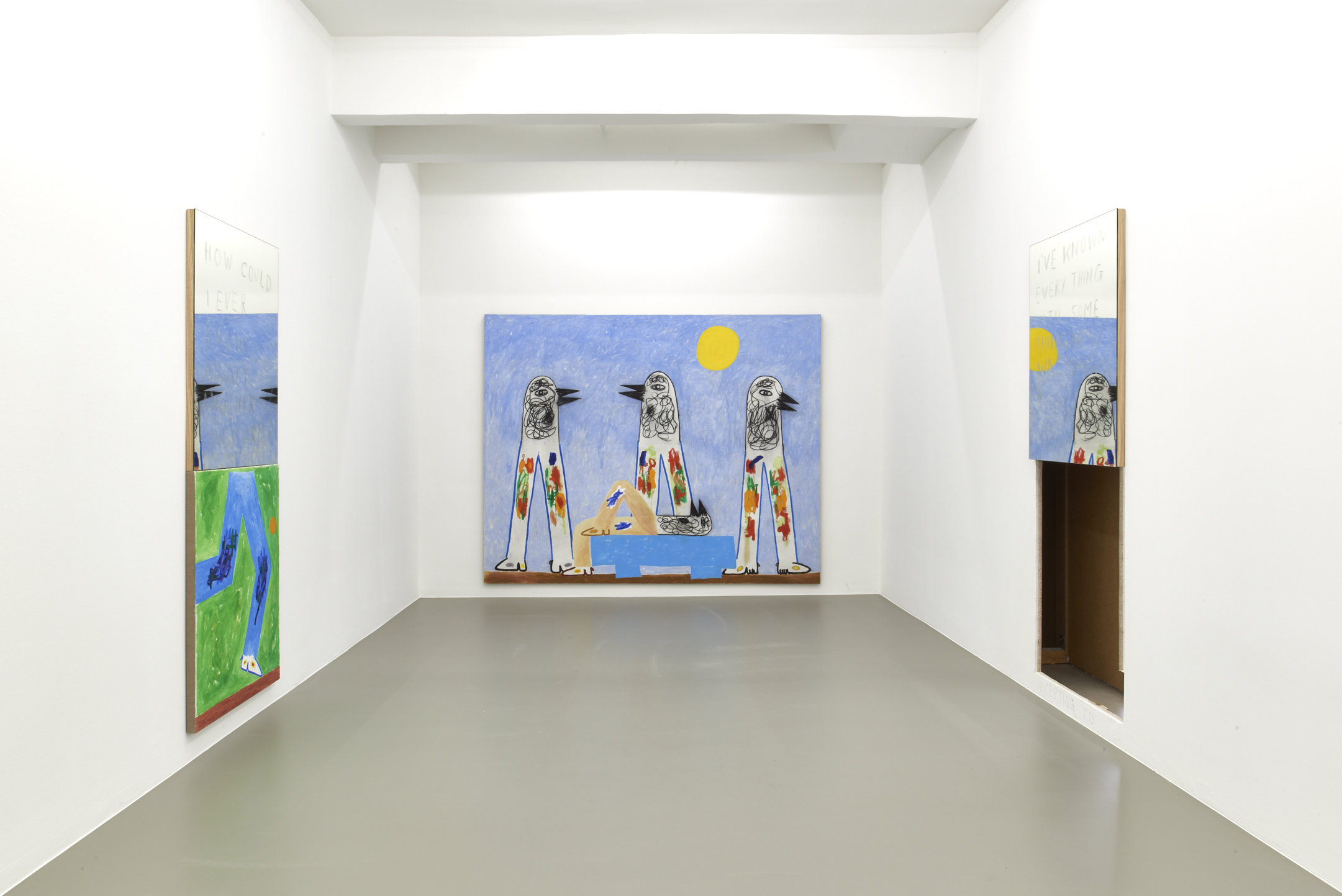
Visitors, Jan Zöller, installation view 2022, Meyer Riegger, Berlin
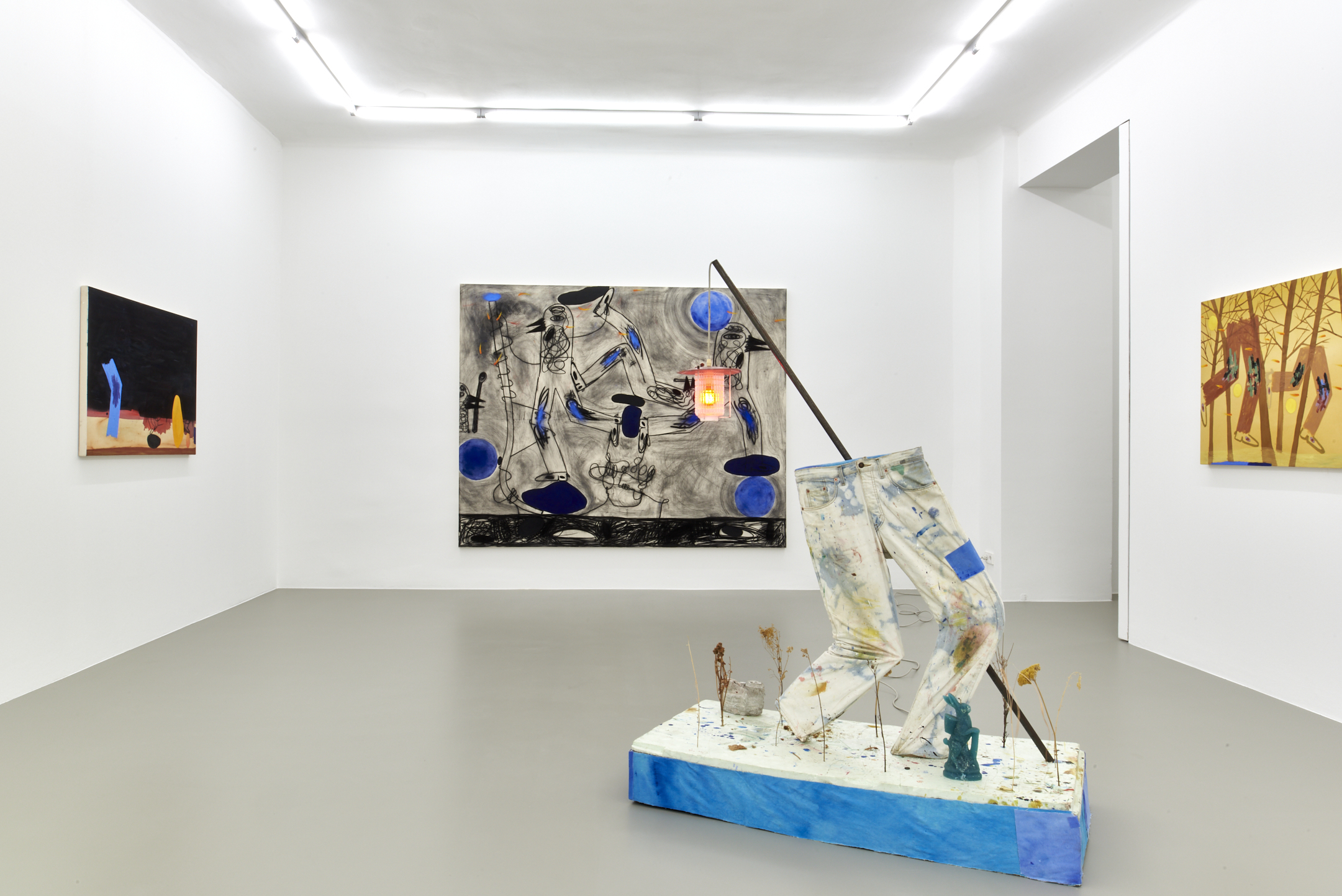
Visitors, Jan Zöller, installation view 2022, Meyer Riegger, Berlin
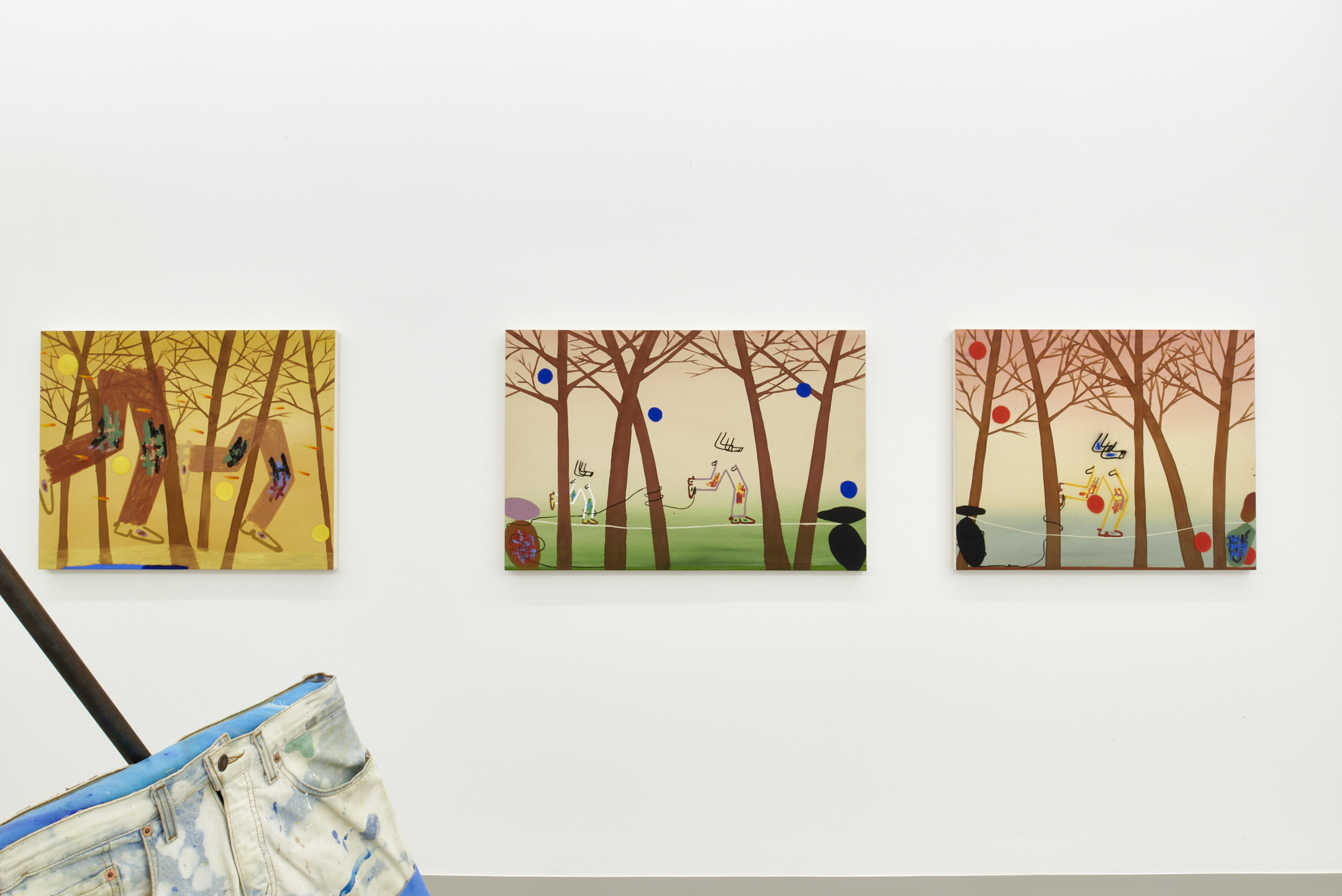
Visitors, Jan Zöller, installation view 2022, Meyer Riegger, Berlin

Visitors, Jan Zöller, installation view 2022, Meyer Riegger, Berlin

Visitors, Jan Zöller, installation view 2022, Meyer Riegger, Berlin
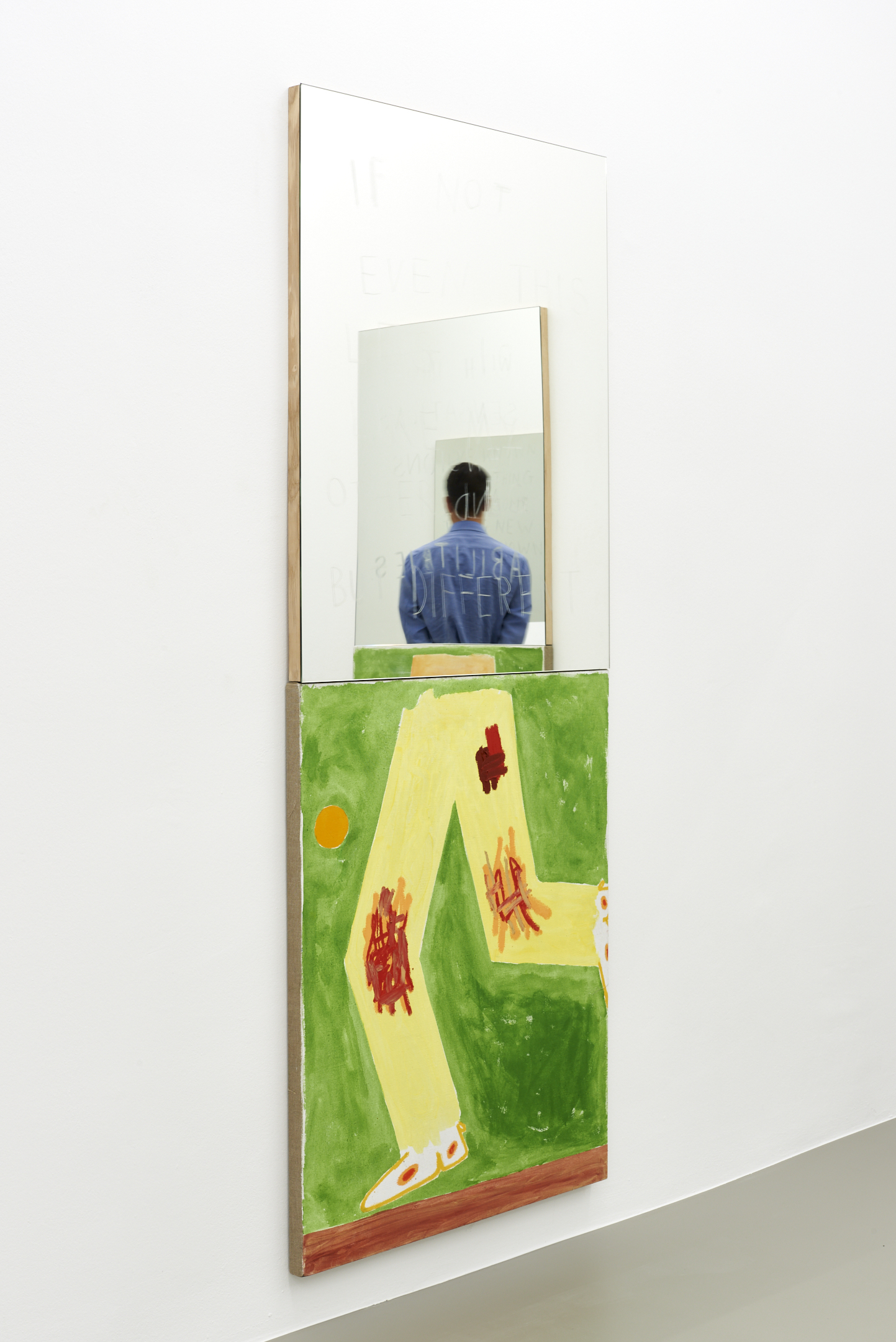
Visitors, Jan Zöller, installation view 2022, Meyer Riegger, Berlin
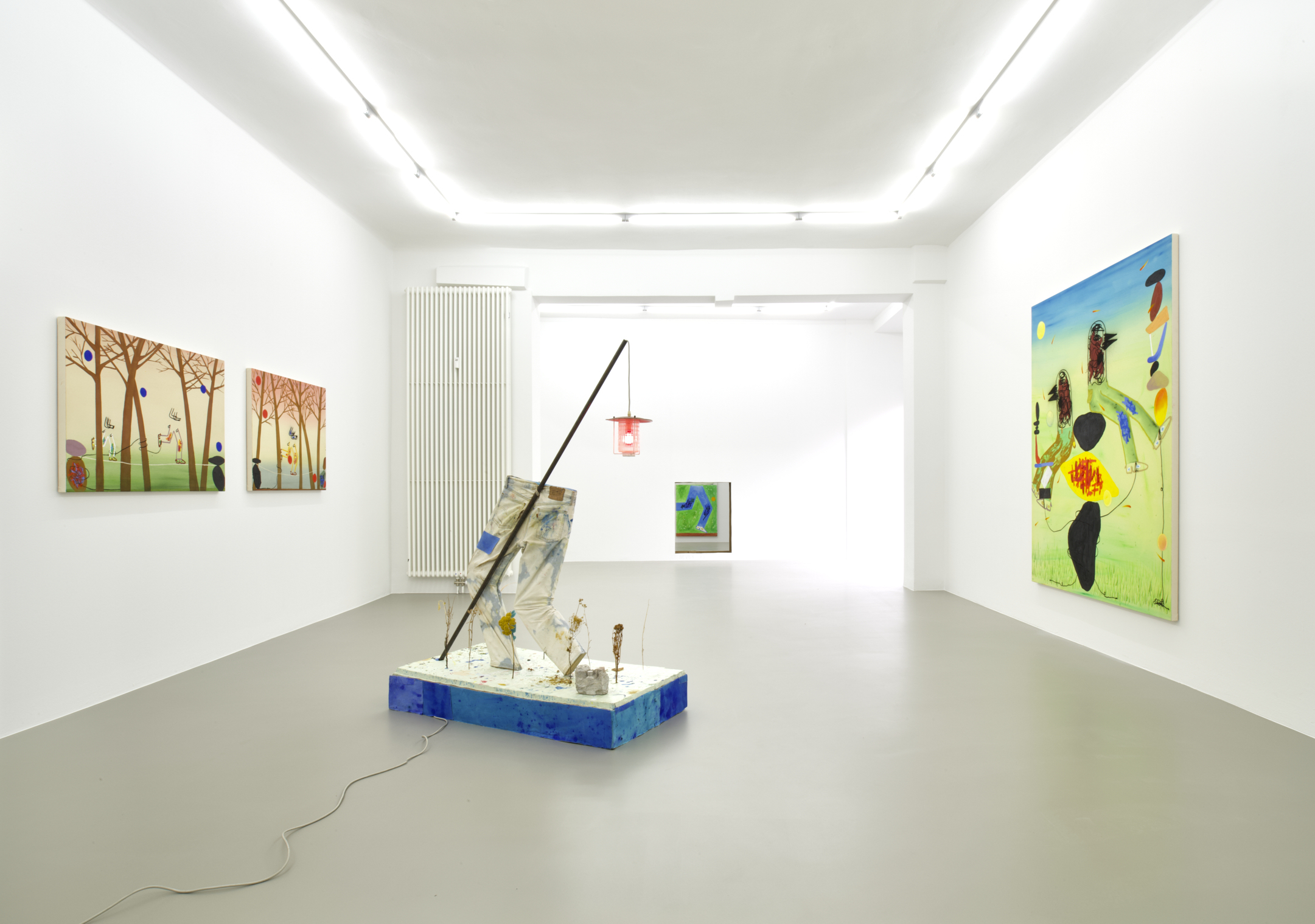
Visitors, Jan Zöller, installation view 2022, Meyer Riegger, Berlin
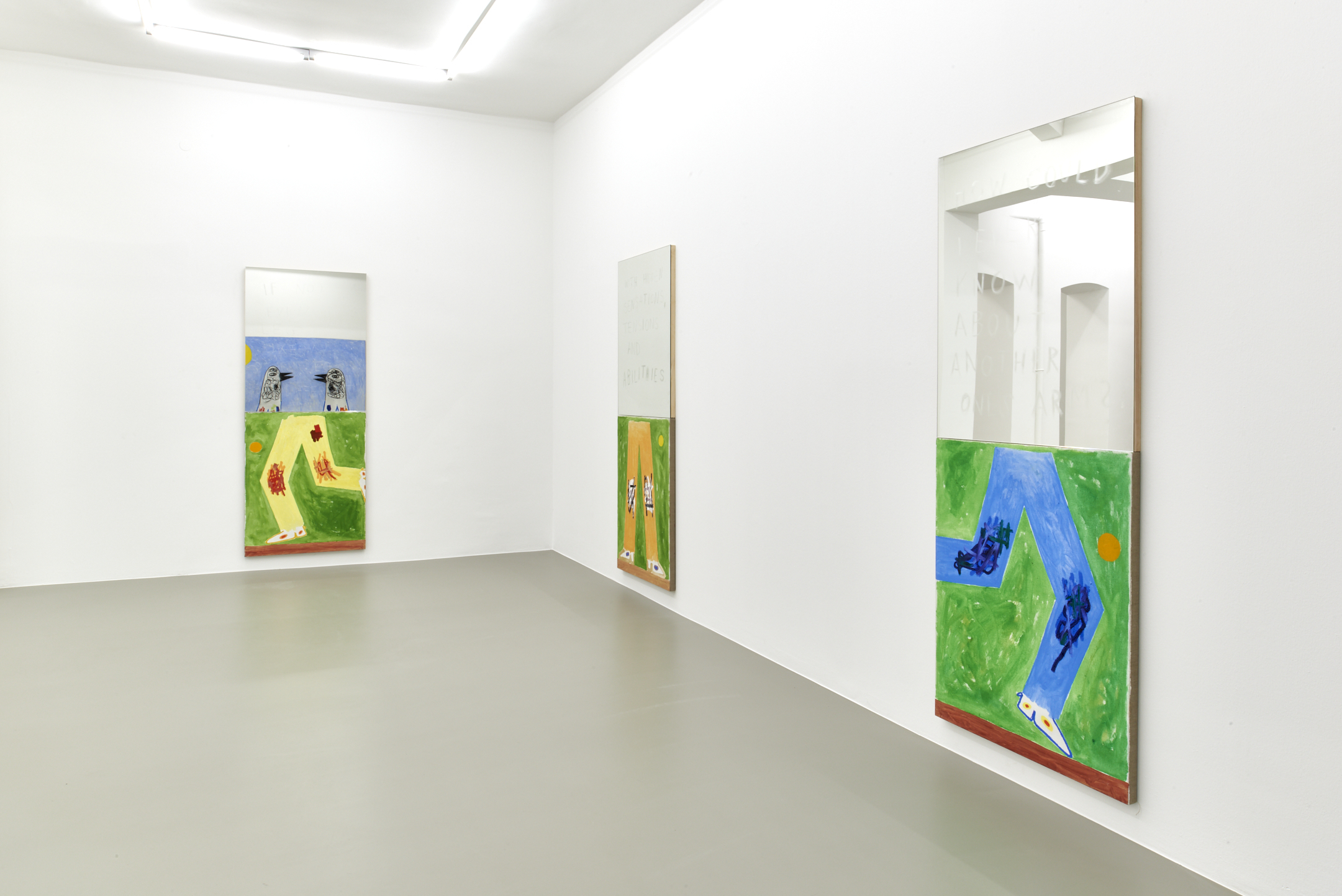
Visitors, Jan Zöller, installation view 2022, Meyer Riegger, Berlin
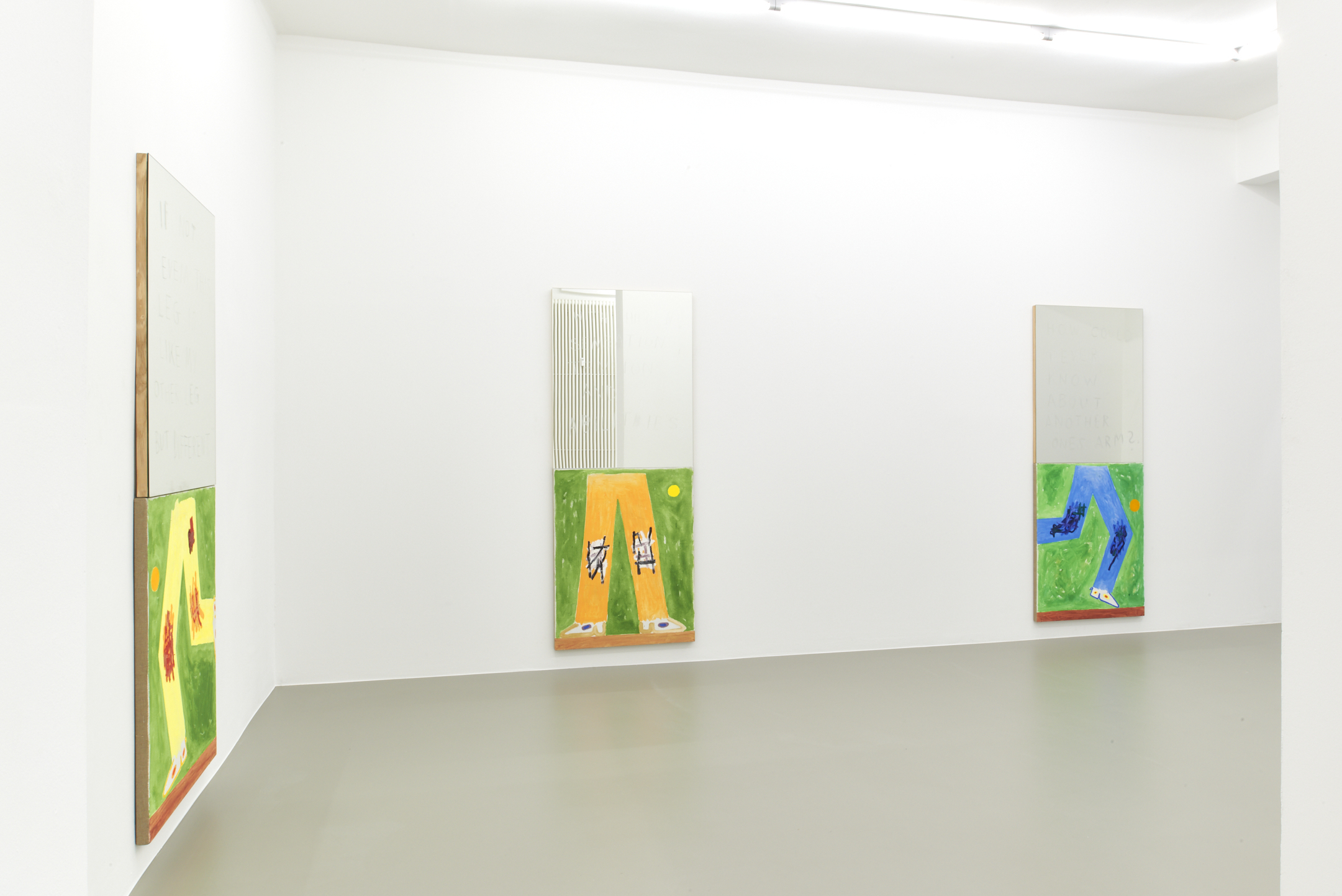
Visitors, Jan Zöller, installation view 2022, Meyer Riegger, Berlin
Jan Zöller is a keen observer of his surroundings with a particular eye for the social structures that determine our day to day interactions. His paintings and, even more so, his exhibitions, are not self-contained constructs meant to convey a sense of a hermetic unity to the viewer. Instead they aim— sometimes more, sometimes less obviously—to activate them, to factor the viewer in as an essential, fundamental component of the work.
Such is also the case with Visitors, his exhibition at the gallery Meyer Riegger. Its focus on visitors is clear from the explicit title of the show, but also the moment one steps into the first room of the exhibition. Mirrors hang over paintings showing Zöller’s characteristic upper-body-less trouser legs – the same archaic-looking, autonomous-seeming, genderless beings that populate so many of the artist’s works. A viewer contemplating one of these lower bodies finds their own face looking back at them in the mirror. As a result, the legs become one’s own; visitors themselves become an ever-changing reflection/image. The works reveal new, unusual visual angles and perspectives, occasionally serving as a projection surface for one’s own ego, at other times becoming something like a “tool” for casting covert glances at the behaviour of others. The waist-high hole in the wall of that same room reverses that logic, allowing those present to watch as other visitors become disembodied trouser legs roaming the gallery.
Wittingly or unwittingly, visitors are made extras in the exhibition or, if so desired, the main characters. Zöller’s interventions ensure that visitors are more than simply viewers as usual: they are also very literally reflected in the images on view, become observers or the observed, but are also made aware of precisely those mechanisms. In doing so he imposes something of his own position on them, uses references and interactions to draw complex links between his artistic practice, the exhibition medium, and visitors.
All the while, one hears the sound of various voices from another room, each reciting the same poem one after the other: “If not even this leg is like my other leg (…) How could I know about another one’s arm (…) Accepting to never knowing.” The exhibition seems more and more like a kind of plea. This is not by chance: Zöller’s practice is on the one hand focused on collective experiences—but also on the individual, whose presence and behaviour both shape and determine those same collective experiences. There is repeated emphasis on the position of the singular person, either in relation to or within the community—whether through the act of putting mirrors “on top” of pictures, a hole in the wall (through which one can watch or be watched), or even by means of the constantly-repeating poem, which both addresses the individual and draws attention to the other(s). In that respect, Zöller’s Visitors ties in with questions that permeate the artist’s entire practice, questions we find repeatedly addressed in different ways and in different constellations: how do social structures, codes, and rules develop, considering their dynamics give rise to certain patterns that guide subjective and collective behaviour? How might these structures, codes, and rules be changed or even done away with completely as the result of joint or even just individual effort; how might entrenched patterns be broken down to create something new? The answers to these questions can be found in pictures featured in another room of the exhibition.
A closer look at Zöller’s works reveals their depiction of society and social interaction as a network, one in which everyone and everything is connected to everything else. The shoelace—a motif that appears more and more often in Zöller’s recent paintings—illustrates those ties or also that dependency, if you will. Eternal Moment (2022) and Wisdom Tree (2022) show them leading a life of their own, connecting all the various elements with one another. Connectedness is emphasized once again in They are the reason you can’t sleep at night (2022), albeit in a different way: not only through the laces, but also in the arrangement of three central figures in the picture—figures caught in a fragile equilibrium. They support one other and, as a result, manage to maintain their own balance. Should even one figure break away from the arrangement, it could collapse.
Zöller’s Visitors finds the artist using different strategies to change our accustomed ways of seeing. He activates us viewers, his pictures offer a surface for projecting and reflecting on our own individual and collective behaviour. All of it amounts to Zöller’s own effort to enable a novel kind of communal experience—one that breaks habits and entrenched structures to make room for something new.
Hannah Eckstein



